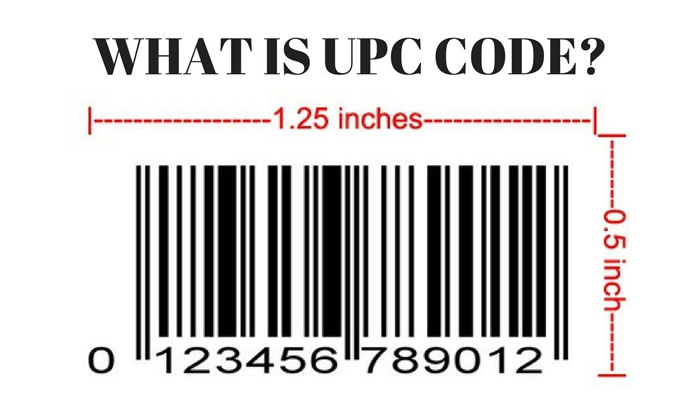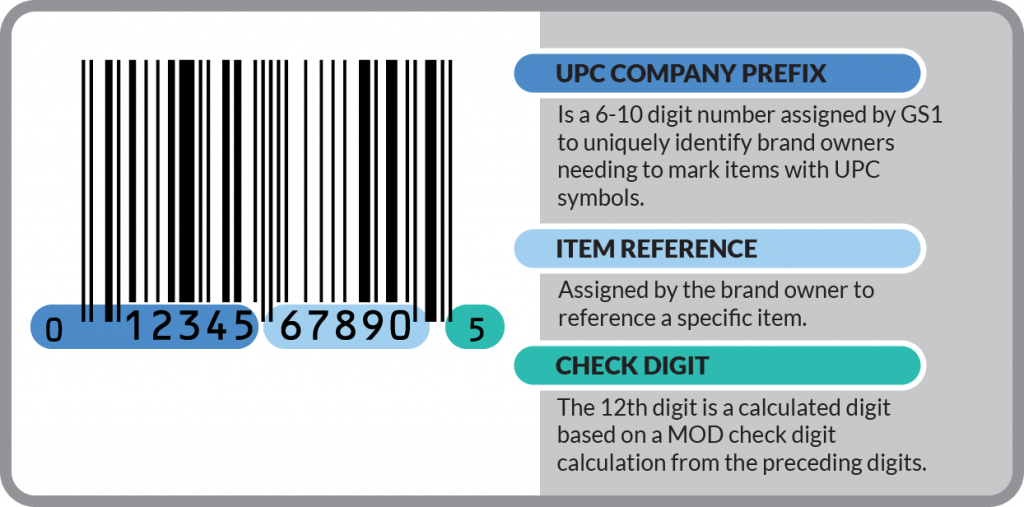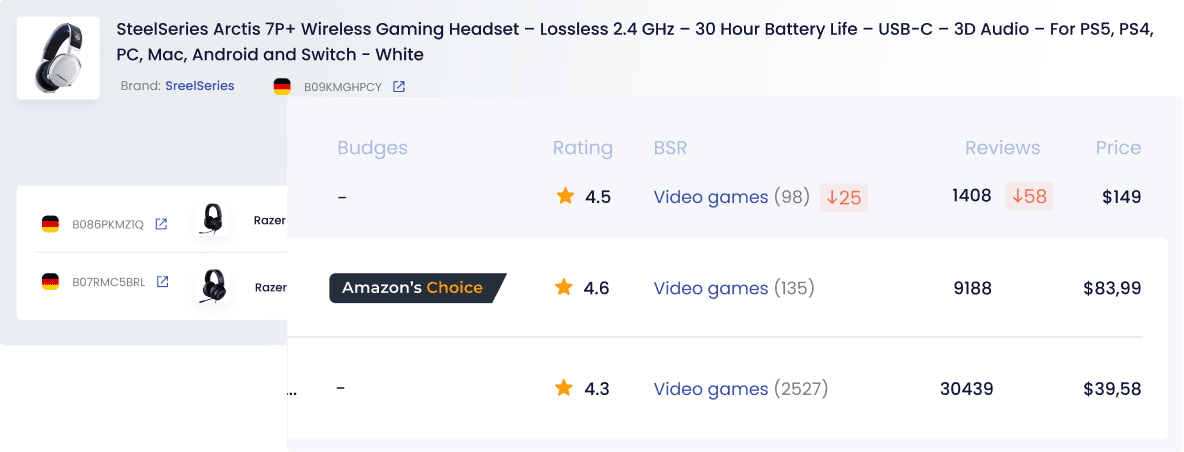Table of Contents
The Universal Product Code (UPC) is an essential component in the retail industry, playing a vital role in identifying and tracking products. This unique identifier consists of a barcode and a corresponding UPC number, providing a standardized method for product identification. In this article, we will delve into what a UPC code and number are, their components, different types of UPCs, the importance of codes for businesses, and more.
What Is a UPC Code?

A UPC code, also known as a barcode, is a graphical representation of the Universal Product Code. It consists of a series of black and white parallel lines spaced apart at varying widths. Each barcode corresponds to a specific product and serves as a unique identifier in the retail world. The barcode can be scanned using barcode readers and scanners, enabling swift and accurate product identification during transactions and inventory management.
What Is a UPC Number?
A UPC number is a 12-digit numerical code that accompanies a UPC barcode. It is the primary unique identifier for a specific product in the retail supply chain. This number is assigned by the GS1 organization, the global standards body responsible for maintaining and regulating standards worldwide. This number ensures that each product within the retail market has a globally unique identification code.
Components of UPC

A UPC consists of several components that provide specific information about the product and its manufacturer. The components include:
- Manufacturer Code: The first six digits represent the manufacturer code, indicating the company that produced the product. This code is unique to each manufacturer and is assigned by the GS1 organization.
- Product Code: Following the manufacturer code, the next five digits represent the product code. This code identifies the specific product within the manufacturer’s product range.
- Check Digit: The last digit of the code is the check digit. It is a calculated digit used for error detection. By employing a simple mathematical algorithm, the check digit serves to ensure that the barcode has been accurately scanned and reduces the likelihood of errors during data entry or scanning.
Types of UPCs
There are two primary types of UPCs:
- UPC-A: This is the standard 12-digit barcode used for most retail products. It provides a unique identification code that helps retailers track inventory, manage stock levels, and streamline the checkout process. The barcode contains the manufacturer code, product code, and check digit.
- UPC-E: The UPC-E is an 8-digit barcode that is often used on smaller retail items with limited packaging space. It is a compressed version of the UPC-A barcode and provides the same unique identification code but requires less physical space on the product packaging.
Importance of UPC for Businesses
The UPC system plays a vital role in the efficient operation of businesses in the retail industry. Here are some key reasons why it is important:
- Inventory Management: UPCs enable businesses to track products accurately, monitor stock levels, and optimize inventory management. By scanning the barcode, retailers can update inventory records in real time, ensuring that they have the right products in stock and reducing the risk of overstocking or stockouts.
- E-commerce Integration: Many online marketplaces, such as Amazon, require sellers to provide a valid UPC for their products. A code ensures seamless integration with online platforms and facilitates product listing, inventory synchronization, and order processing.
- Sellersonar: Sellersonar is a tool that can analyze millions of UPCs to provide insights into market trends, competition, and pricing. It helps businesses make informed decisions by identifying product opportunities, monitoring pricing strategies, and keeping an eye on the competition.
- Supply Chain Efficiency: The use of UPCs in supply chain management streamlines logistics and reduces errors. By scanning UPCs during shipping and receiving, businesses can ensure accurate tracking, reduce the chances of shipment errors, and improve overall supply chain efficiency.
- Faster Checkout Process: With UPCs, the checkout process becomes significantly faster and more efficient. Scanning the barcode eliminates the need for manual data entry, reducing the chances of errors and speeding up the transaction process for both customers and cashiers.
Obtaining a UPC
To obtain a valid UPC, businesses need to follow a specific process:
- Apply for a GS1 Company Prefix: Contact the GS1 organization in your country to apply for a unique GS1 Company Prefix. This prefix is used to assign unique UPCs to your products.
- Assign UPCs to Products: Once you have a GS1 Company Prefix, you can assign UPCs to your products. Each product will have a unique combination of the manufacturer code, product code, and check digit.
- Implementation: Incorporate the assigned UPCs into your packaging, labeling, and inventory management systems. Ensure that the barcode is scannable and easily readable.
- Verification: Conduct thorough checks to ensure that the barcode and number are accurately represented on the product packaging and labels. This step helps avoid scanning errors and ensures compliance with GS1 standards.
What’s Next?
So, you’ve obtained UPC codes for your products and added listings to your store. What’s next? Utilizing SellerSonar’s listing monitoring tool can be a game-changer for your e-commerce strategy. This powerful tool empowers you to closely monitor your competitors, track pricing trends, manage reviews, optimize listings, and receive timely alerts.
Here’s how you can maximize its benefits for your business:
- Real-time alerts: The tool continuously monitors your product listings and sends instant notifications for any critical issues or changes, such as product page alterations, Buybox hijackers, new/deleted reviews, keyword rank history, price fluctuations, and product suppressions. This ensures you’re promptly informed of any potential problems. You can also set critical notifications to get real-time alerts for issues that are most relevant.

- Competitor monitoring: SellerSonar allows you to track and analyze your competitors’ listings effortlessly. You can easily add their ASINs to your monitoring list and compare factors like price, rating, and review quantity. This empowers you to stay ahead of the competition.

- Keyword performance: By tracking relevant keywords for your products, you can analyze their performance and visibility in search results. SellerSonar provides detailed insights into how your keywords rank, helping you optimize your listings for better discoverability.

- Review analysis: This tool helps you keep an eye on what customers are saying about your products, including top phrases for better insights. It notifies you when new good or bad reviews show up and if any reviews change or get deleted. This is really important for keeping a good reputation and dealing with customer problems quickly.

Ready to try? Don’t miss out on SellerSonar’s free 29-day trial. Register now and gain a competitive edge in the marketplace!
UPC vs. SKU vs. ASIN
Although UPCs, SKUs, and ASINs serve as distinct product identifiers, they play different roles in the retail industry:
- UPC: Universal Product Codes are globally recognized and unique identifiers for products. UPCs are used primarily in the retail sector for inventory management, sales, and supply chain operations.
- SKU: Stock Keeping Units are internal codes created by individual businesses to track inventory within their systems. SKUs often include additional information such as product attributes, variants, and pricing details specific to the business.
- ASIN: Amazon Standard Identification Numbers are unique identifiers assigned by Amazon to products listed on their platform. While UPCs are often required for listing on Amazon, ASINs are specific to the Amazon marketplace.
When selling products on different platforms, it is important to understand the specific requirements for each identifier and ensure compliance with the appropriate standards.
Conclusion
The Universal Product Code (UPC) is a fundamental component of the retail industry, providing a standardized method for identifying and tracking products. With a combination of a unique UPC code and number, businesses can effortlessly manage inventory, streamline operations, and integrate with various sales channels, including online marketplaces.
Obtaining a valid code ensures compliance with industry standards and enables businesses to leverage tools like SellerSonar for in-depth market insights.
Take advantage of the demo to experience firsthand how SellerSonar can revolutionize your Amazon experience.





